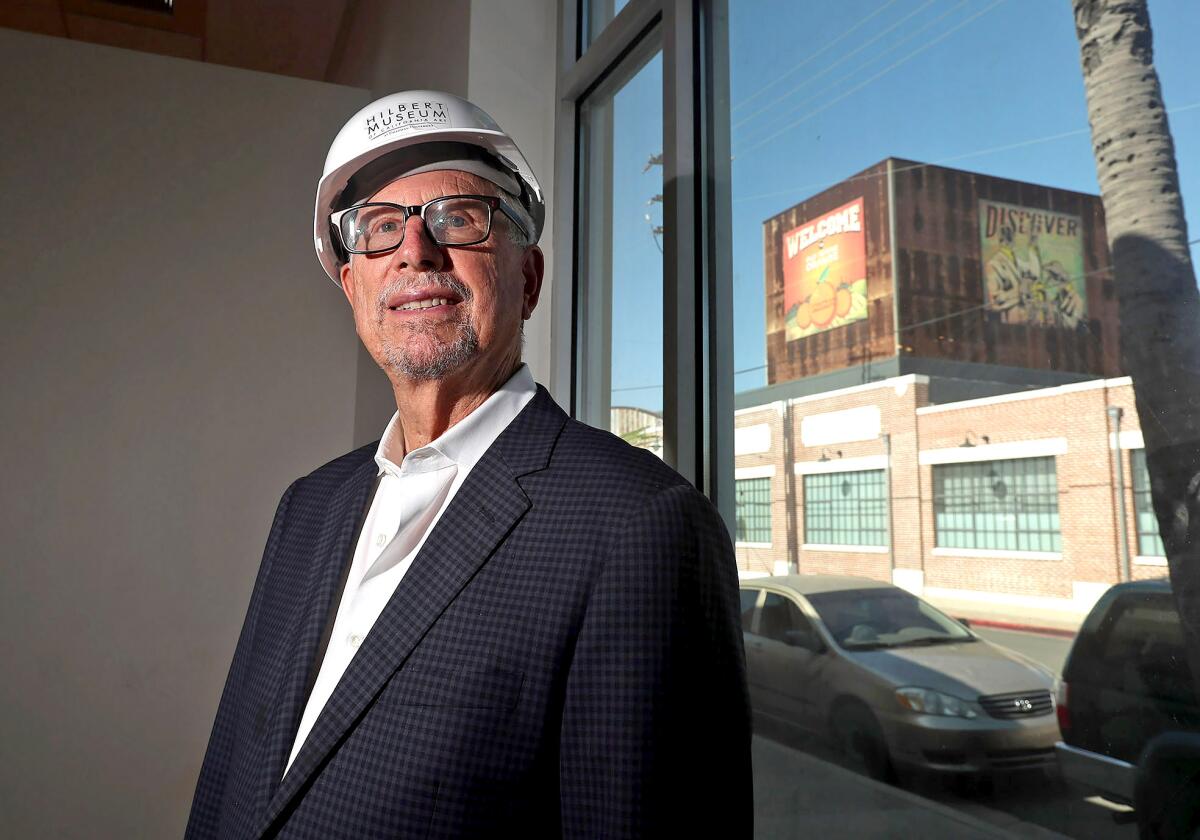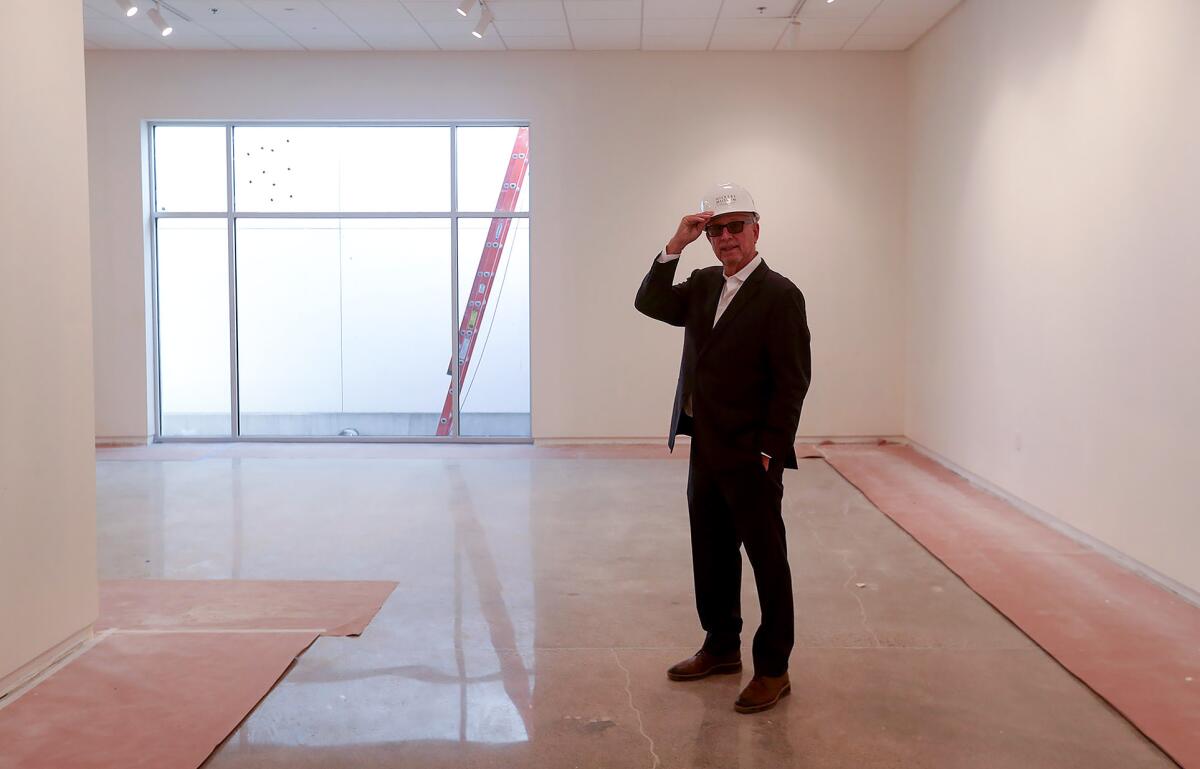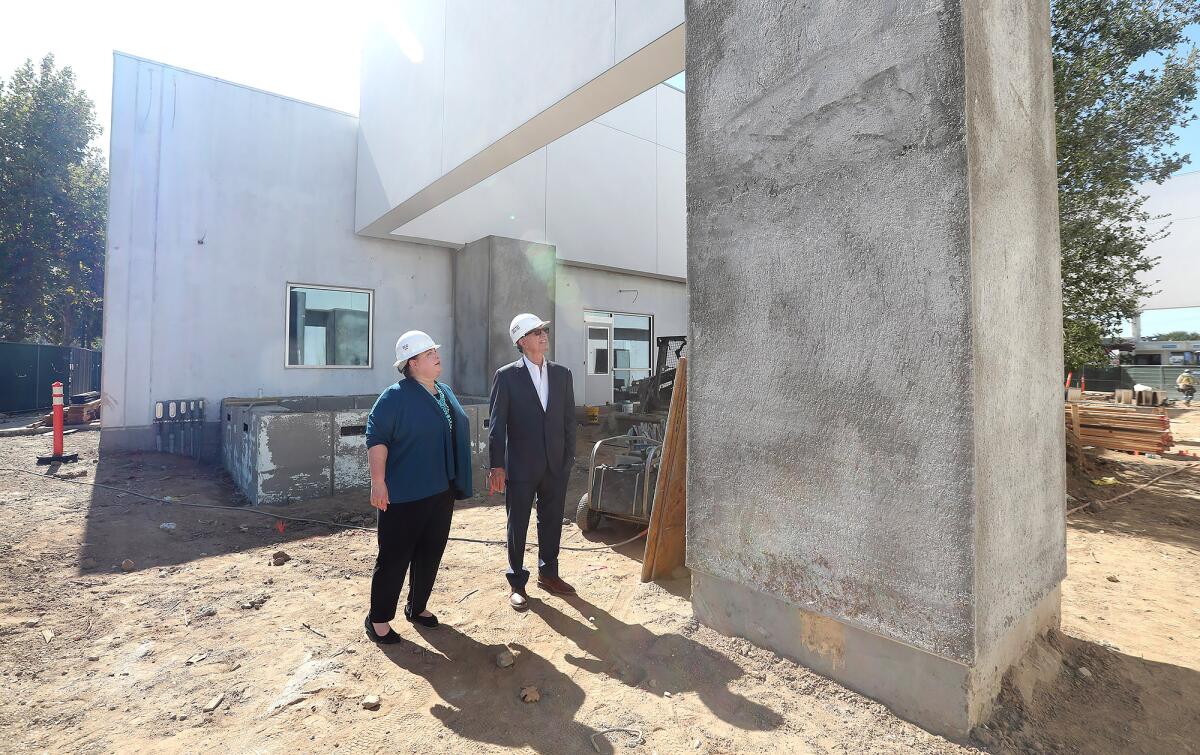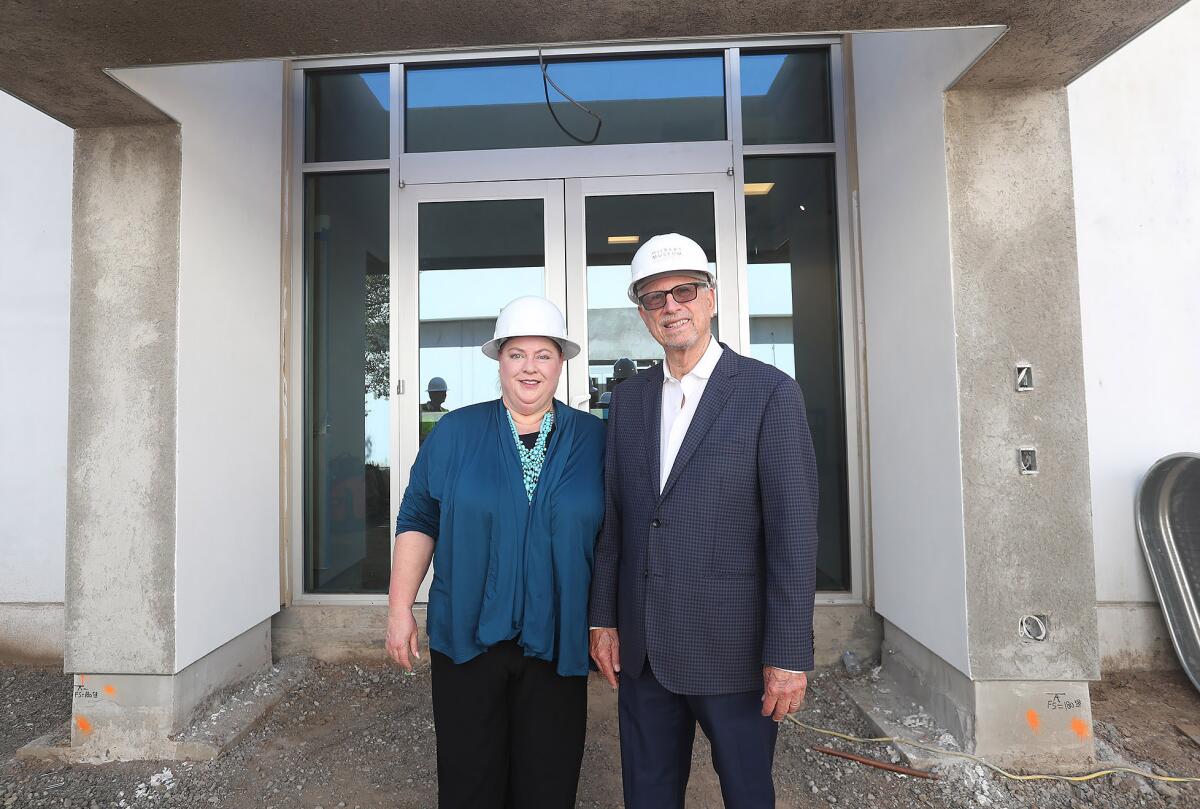Hilbert Museum of California Art at Chapman University will triple in size in 2024

- Share via
Orange — Mark and Janet Hilbert have one of the largest collections of California narrative art, and an expansion of the Hilbert Museum of California Art at Chapman University will create more room to showcase and share it.
“We hope to continue to foster art and artists in this community,” said Mark Hilbert, during a special walk-though of the construction site where the museum is in development. “And we would like to see this area become an arts district.”
The redesign, by Johnston Marklee Associates of Los Angeles, includes two side-by-side buildings: the original Hilbert Museum at 167 N. Atchison St. in Orange and the former Chapman Dance Center to its north.
“The Hilberts gave a major gift to Chapman University in 2014, and so that gave us the wherewithal to open the original Hilbert Museum,” said Mary Platt, director of the Hilbert Museum of California Art at Chapman University.

Conveniently located across from the Orange Train Station, the original museum measured about 7,500 square feet and found much success.
“In 2019 we pulled over 30,000 visitors,” said Platt. “It has become one of the most popular museums in Orange County.”
When the museum reopens in 2024, the newly expanded Hilbert will have triple the exhibit space of the former museum, stretching to more than 22,000 square feet.
“We will be opening with eight major exhibitions,” said Platt.
There will be plenty of space to display the more than 5,000 pieces in the Hilbert collection that chronicle California history from the 1900s to the present through the work of not only California scene artists but Hollywood studio artists and animators.
“A lot of our paintings are figurative because we are a story-telling museum, a narrative museum, and when you have people, there is more of a story line,” said Hilbert.
Museum visitors can look forward to works from David Hockney, depicting the swimming pools in the backyards of California that inspired much of his art. They can also anticipate an entire gallery dedicated to California watercolors.

“This museum is noted for having one of the greatest collections of California watercolors,” said Platt. “During the period between the 1920s and the 1960s there were a lot of artists here in California that were depicting everyday life. Not just landscapes but people in cities, ranches, in the water and on the beaches.”
Watercolors are a faster, more translucent medium, and museums tend to keep their watercolors shelved and protected, since they are works on paper. Hilbert Museum is happy to display them and has been internationally recognized for its watercolor collection.
There will also be art from Norman Rockwell, a gallery dedicated to Disney animation, and galleries for Indigenous American art and American design.
Besides more gallery space, the new design will include a cafe, a research library, outdoor event space and a community room that will be used for events, lectures and classes.
“The Burra Community Room will have enough space to seat maybe 100 people for lectures,” Hilbert noted.

Special attention has also be given to the previous life of the land, and the new design honors the local Orange industrial and mercantile architecture and the historic Cypress Street barrio, which was home to many Mexican Americans in the city of Orange.
“We did several things because we wanted to have an acknowledgment of the location,” said Hilbert.
The cafe will be named Cypress Street Cafe, for instance and the architecture of the building takes influences from Mexican architect Luis Barragán.
“The architects are Johnston Marklee Associates of Los Angeles, but Barragán is one of the inspirations, and he is known for this geometric massing and sharp angled geometric forms that cause really sharp shadows.”
Additionally, the landscaping will be made up of plants native to the area with a large California live oak tree in the center of the museum’s courtyard.

The crown jewel of the expanded building will be the Millard Sheets mosaic, “Pleasures Along the Beach.” The massive mosaic is being restored and relocated to the museum’s facade after 50 years at a flagship Home Savings & Loan building on Wilshire Boulevard in Santa Monica. Mark and his wife, Janet, identified “Pleasures Along the Beach” as their favorite from the series of mosaics, painted murals and stained glass artworks Sheets completed for Home Savings & Loan and were ecstatic to give the mosaic a new home.
Installation of the 40-foot-by-16-foot mosaic, made using Murano glass from Italy, is anticipated to begin in mid-November, while the museum is projecting a grand opening in late February.
Platt said she’s sure the mosaic will help make the building a distinct landmark.
“It is going to become a billboard for the city of Orange, for the Hilbert Museum and for Chapman University,” said Platt. “People can see it from the train, from the bus stop and driving by. And since it is made of thousands of pieces of colorful glass, so when the sun sets and hits it, it is going to light up like anything.”
All the latest on Orange County from Orange County.
Get our free TimesOC newsletter.
You may occasionally receive promotional content from the Daily Pilot.






